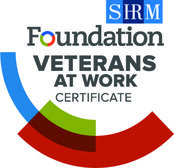5 Pricing Tips for the New Year
As we enter a new calendar year, we begin the madness of sharpening our budgets and pipelines. Some of the focus ends up being on managing expenses and headcount, as it should, but often some quick and easy planning can help you to optimize your pricing strategy for the next year.
To get you started, here are five pricing tips for the new year:
- Contract Labor Bill Rate Review
Have you had any staff turnover on your firm fixed price or time and materials contracts? If so, you may be able to capture some labor efficiencies by “greening” those positions and/or consolidating functions under higher bill rate positions. BONUS TIP: This is especially helpful if the contract is up for a re-competition and you’re the incumbent. - Cost-Plus Contracts
If your Cost-Plus contract is coming up for a re-compete, review all of the direct labor rates, and examine them against market rates (such as a survey or government rate data such as Bureau of Labor Statistics). Bid market rates, NOT current employee rates. - Subcontract Review
Are there opportunities to bring in new subcontractors of the same quality/scope, but with better rates? This might be dependent on teaming agreements and workshare commitments. If the contract allows it, develop an active strategy around subcontractor selection and rates every year. - Overhead & Infrastructure Review
Facilities – this is a big one. Are there opportunities to renew different types of leases/facilities? You may want to explore the trend of shared/co-working spaces. This solution can provide a lot of cost efficiencies if your contract/company policy allows it. Telecom expenses are also a major player. There are a multitude of new options that minimize the telecom costs for entire companies through third-party vendors and resellers, or cost sharing with other companies. Do your homework and save your company money in the long run. - Beef Up Your Back Office Support
Can you outsource major functions such as accounting, HR, recruiting, contracts? Believe it or not, this is becoming a good option for many mid-tier contractors. Use this opportunity to get lean without sacrificing quality and compliance standards.
The tips above are not a one-and-done type of deal. You should be reviewing internally each year as you plan operations and execution of contracts for the new year. While much of this is common sense, seldom is it applied to affect pricing strategy/updates. Use this information to bid sharper and smarter than your competitors and get the edge in pricing!





